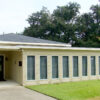The decimal to hex converter in Niagara 4 Tridium plays a vital role in automating data conversion processes, streamlining system integrations, and ensuring accurate communication within building automation systems (BAS). Niagara 4, developed by Tridium, is a powerful platform used in smart buildings for managing, integrating, and optimizing systems. Converting decimal numbers to hexadecimal is a common requirement for developers and integrators working with BAS, and Niagara 4 provides tools to achieve this efficiently.
This article explores everything about creating, implementing, and using a decimal to hex converter in Niagara 4 Tridium, offering insights into its significance and practical applications.
What Is a Decimal to Hex Converter?
A decimal to hex converter transforms numerical values from the decimal (base 10) system into the hexadecimal (base 16) system. Hexadecimal is commonly used in computing and automation due to its compact representation of binary values.
Key Concepts:
- Decimal System: Base 10, uses digits 0-9.
- Hexadecimal System: Base 16, uses digits 0-9 and letters A-F to represent values 10-15.
- Use in BAS: Essential for memory addressing, color codes, and protocol communication.
Why Use a Decimal to Hex Converter in Niagara 4 Tridium?
Niagara 4 is extensively used in building automation for tasks like data integration, control logic, and system monitoring. Converting decimal to hexadecimal is necessary for certain configurations and communication protocols.
Benefits in Niagara 4 Tridium:
- Protocol Compatibility: Facilitates data exchange with devices that use hexadecimal addressing.
- Efficient Programming: Simplifies complex logic by using hex values.
- Data Visualization: Enhances readability of large binary datasets.
- System Integration: Ensures seamless integration with third-party devices and applications.
How to Create a Decimal to Hex Converter in Niagara 4 Tridium
Developing a decimal to hex converter in Niagara 4 involves using the platform’s built-in tools and programming capabilities.
Steps to Build the Converter:
1. Set Up Your Niagara 4 Environment
- Ensure Niagara 4 is installed and configured.
- Access the Workbench application for development.
2. Create a Custom Component
- Open the Palette and create a new custom component for the converter.
- Use the Niagara Framework programming blocks to design the logic.
3. Define the Input and Output
- Input: Accept decimal values through a NumericWritable object.
- Output: Display the hexadecimal result using a StringWritable object.
4. Write Conversion Logic
- Use a BajaScript or Logic Block to implement the conversion formula:
- Divide the decimal number by 16.
- Record the remainder (hex digit).
- Repeat until the quotient is zero.
- Map the remainders to hex digits (0-9, A-F).
5. Test the Component
- Simulate inputs and verify the output values in Niagara Workbench.
- Debug any discrepancies to ensure accuracy.
6. Deploy the Converter
- Add the converter component to your Niagara 4 station.
- Integrate it with other components as needed.
Applications of Decimal to Hex Conversion in Niagara 4 Tridium
The decimal to hex converter has multiple practical uses within the Niagara 4 platform:
- Device Addressing
- Assigning unique hexadecimal addresses to devices for seamless communication.
- Color Coding
- Converting RGB decimal values to hexadecimal for UI design in Niagara dashboards.
- Data Conversion
- Ensuring compatibility with devices that require data in hexadecimal format.
- Protocol Integration
- Facilitating communication with Modbus, BACnet, or custom protocols that rely on hex values.
Examples of Decimal to Hex Conversion
Simple Conversion Example:
Convert 255 from decimal to hexadecimal:
- Divide 255 by 16: Quotient = 15, Remainder = 15.
- Map remainders: 15 = F, 15 = F.
- Result: Hexadecimal = FF.
Application in Niagara 4:
A temperature sensor sends its reading (decimal 25). The system converts this to hexadecimal (19) for protocol communication.
Benefits of Using Niagara 4 for Conversions
Niagara 4’s architecture offers several advantages for creating converters and other custom tools:
Key Benefits:
- Flexibility: Supports custom scripts and logic designs.
- Scalability: Easily integrates with systems of varying sizes.
- Real-Time Processing: Converts values on the fly, ensuring efficiency.
- User-Friendly Interface: Simplifies configuration through intuitive Workbench tools.
Best Practices for Decimal to Hex Conversion in Niagara 4
To ensure accuracy and efficiency, follow these best practices when creating and using a decimal to hex converter:
1. Validate Inputs
- Ensure input values are within acceptable ranges.
- Handle exceptions like negative numbers or non-numeric inputs.
2. Optimize Logic
- Use efficient algorithms to reduce processing time.
- Avoid redundant calculations to enhance performance.
3. Document Your Component
- Include clear descriptions of input, output, and logic.
- Use comments in your code for future reference.
4. Test Extensively
- Test the converter with a variety of input values.
- Simulate edge cases to identify potential issues.
Challenges in Decimal to Hex Conversion
Despite its utility, implementing a decimal to hex converter in Niagara 4 may involve some challenges:
Common Challenges:
- Logic Errors: Missteps in conversion algorithms can result in incorrect outputs.
- Integration Complexity: Ensuring compatibility with existing station components.
- Performance Optimization: Managing resource usage in large-scale systems.
By addressing these challenges early, you can ensure a robust and reliable converter.
How to Troubleshoot Decimal to Hex Conversion in Niagara 4
If issues arise during or after implementation, follow these troubleshooting steps:
Steps to Resolve Issues:
- Check Input Values
- Verify that inputs are valid and correctly formatted.
- Debug the Logic
- Use Workbench’s debugging tools to trace the conversion process.
- Inspect Outputs
- Confirm that the outputs match expected hexadecimal values.
- Review Component Settings
- Ensure all links and configurations are properly defined.
Tools and Resources for Niagara 4 Development
Niagara 4 offers various tools to support developers in creating custom components like decimal to hex converters:
Key Tools:
- Niagara Workbench: A comprehensive development and management environment.
- BajaScript: A scripting language for advanced logic design.
- Niagara Docs: Official documentation and tutorials for the framework.
Additional Resources:
- Online forums and developer communities.
- Tridium certification courses for advanced learning.
- Git repositories with example components and scripts.
Conclusion
The decimal to hex converter in Niagara 4 Tridium is an essential tool for developers and integrators working with building automation systems. Its ability to transform numerical data efficiently ensures smooth communication, robust programming, and compatibility with a wide range of devices and protocols.
By understanding the steps, best practices, and challenges involved in creating a converter, you can harness the full potential of Niagara 4 for your projects. Whether you’re streamlining device communication or enhancing data visualization, this converter is a valuable addition to any Niagara station.
Also Read: Wyoming Mesothelioma Lawyer Vimeo: Expert Legal Support for Victims
FAQs
What is the purpose of a decimal to hex converter in Niagara 4 Tridium?
The converter ensures compatibility with protocols and devices that use hexadecimal values for communication and addressing.
Can I use scripting to create a converter in Niagara 4?
Yes, BajaScript or Python (with a compatible module) can be used to create efficient conversion logic.
How does a decimal to hex converter benefit building automation systems?
It facilitates seamless data exchange, protocol integration, and efficient system programming.
Is it possible to integrate a converter with existing Niagara 4 stations?
Yes, converters can be deployed as custom components and linked to other station elements.
What challenges might arise in creating a converter?
Common issues include logic errors, integration complexities, and performance bottlenecks in large systems.
How can I ensure my converter works correctly?
Test extensively with a range of input values, including edge cases, to verify accuracy.
Are there pre-built converters available in Niagara 4?
While Niagara 4 does not include a dedicated decimal to hex converter, templates and scripts can be found in community resources.



